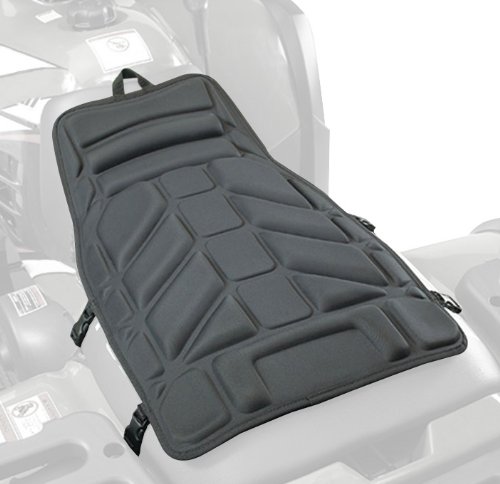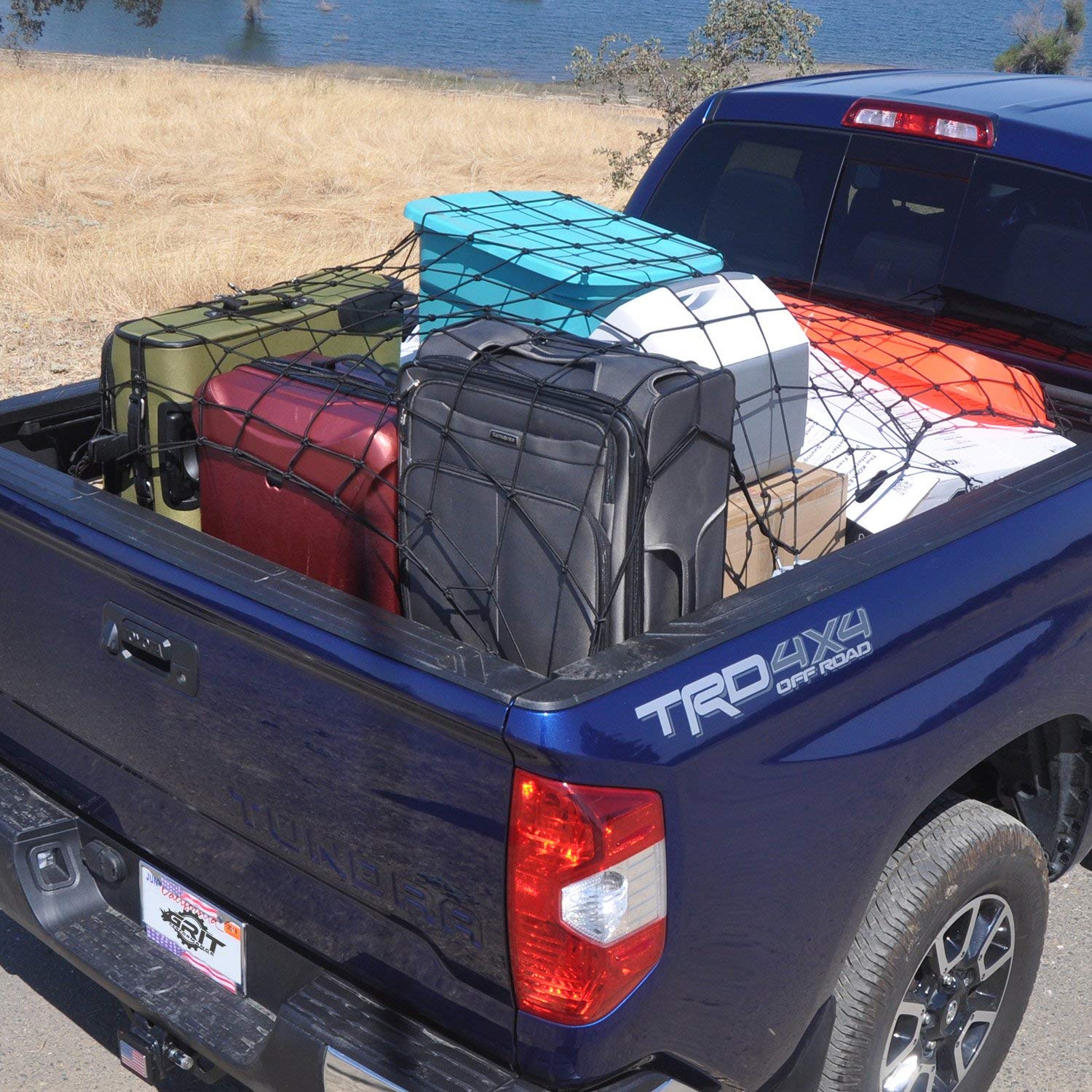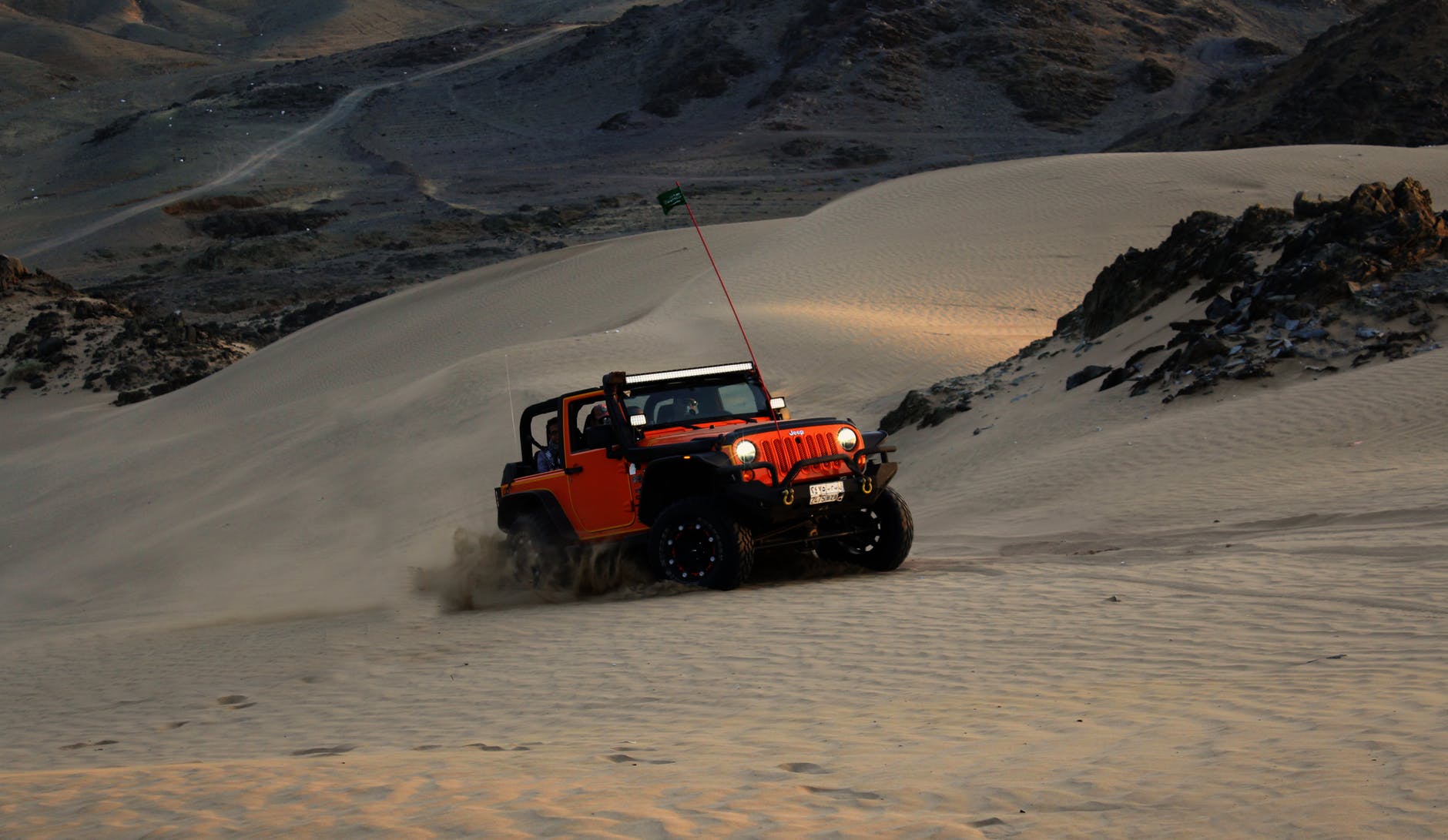
What’s the best type of jack for off-roading? Are Hi-Lifts worth it or will a normal hydraulic jack do the trick?
In this article we’ll review the most common types of jacks and give our recommendations for each type.
Looking for your desired off-road jack doesn’t have to be a shot in the dark. Here’s an info regarding common off-road jack lift heights and prices, to help you on your search.
Overview
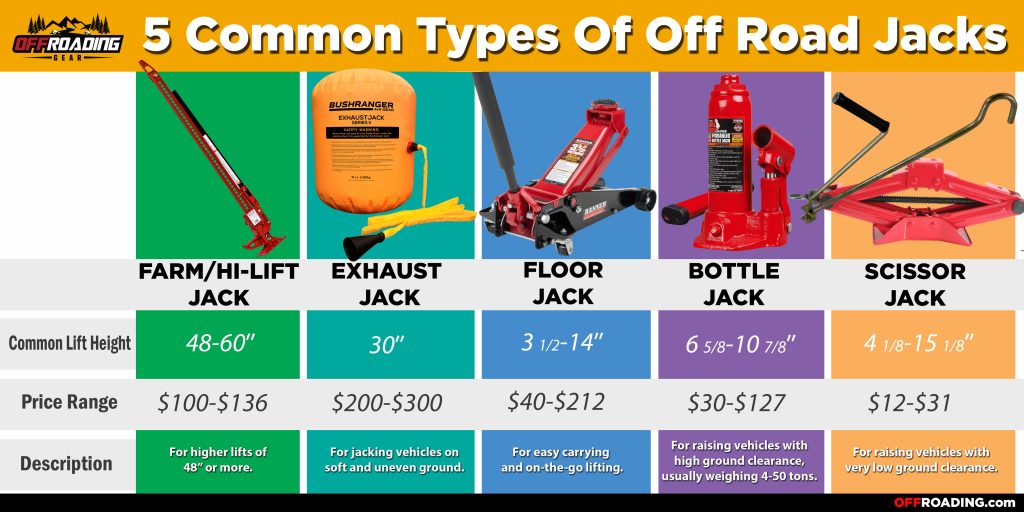
Vehicle jacks can basically be divided into five categories:
- Scissor Jacks
- Bottle Jacks
- Floor Jacks
- Farm/Hi-Lift Jacks
- Exhaust Jacks
To prevent it, we’ll help you distinguish different jacks based on their purposes. If you already know what you’re looking for, then its time you take your pick on the 5 best off-road jacks.
What’s the Best Type of Jack for Off-road Vehicles?
Let’s get down to the nitty gritty: what’s the best jack for your jeep, Forerunner or other off-road vehicle?
Most off-road vehicles will do well having either a farm jack/Hi-lift jack OR an exhaust jack in their vehicle at all times. Both allow impressive lifting heights and can be used on the trail – not just on pavement.
With that being said, keep a nice floor jack in your garage for when your back at home.
1. Traditional Vehicle Jack
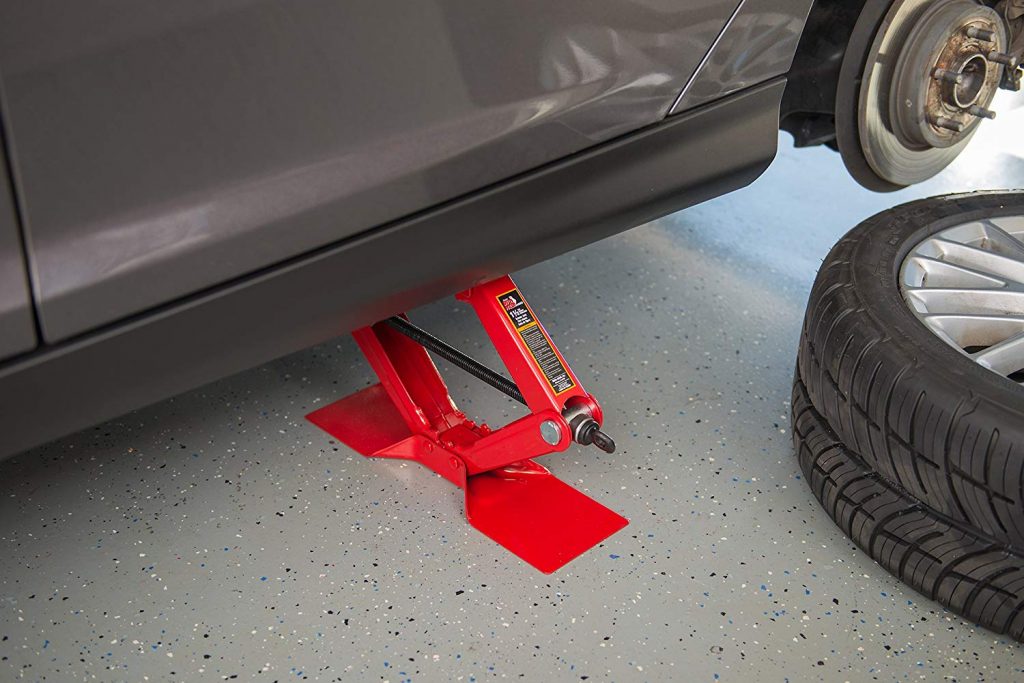
The traditional vehicle jack also goes by the name scissor jack because its appearance closely resembles that of a typical scissor. But apart from its looks, it also requires you to use it in a squeezing manner for lifting your vehicle (as in the case of an ordinary scissor for cutting items into bits and pieces). Its other variant is known as the jack screw which is able to lift average-size trucks and S.U.V.s at a manageable level. .
It’s usually included in cars and other common vehicles mainly for changing flat tires, during emergency cases. But because of its small size, they’re generally not recommended for larger vehicles like trucks and larger SUVs. Also, scissor jacks are SLOW! So if you’re jacking your vehicle frequently it’s better to use another type of jack.
- Space-saver.
- For simple lifting tasks.
- Takes time to lift.
- Not suitable for large vehicles.
2. Hi-Lift Jack
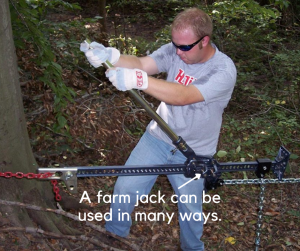
The hi-lift jack, also known as the farm jack, is revered for the height with which it can lift a vehicle. It can lift a vehicle up to 4′ or higher! No other type of jack can come close to this. For this reason, it’s ideal for use on off-road vehicles with larger tires and needing higher lifts.The purpose of farm jacks doesn’t just stop from merely leveling your vehicle. As a matter of fact, you can use it for lifting, turning, and towing your 4x4s.However, unlike the scissor jack, you can’t use it on regular vehicles with a low ground clearance because they’re specifically made for those with higher ones, particularly for off-roading (i.e. bigger jeeps and pickup trucks).Hi-Lift is the brand name but they also come in many generic varieties, often at a fraction of the cost.
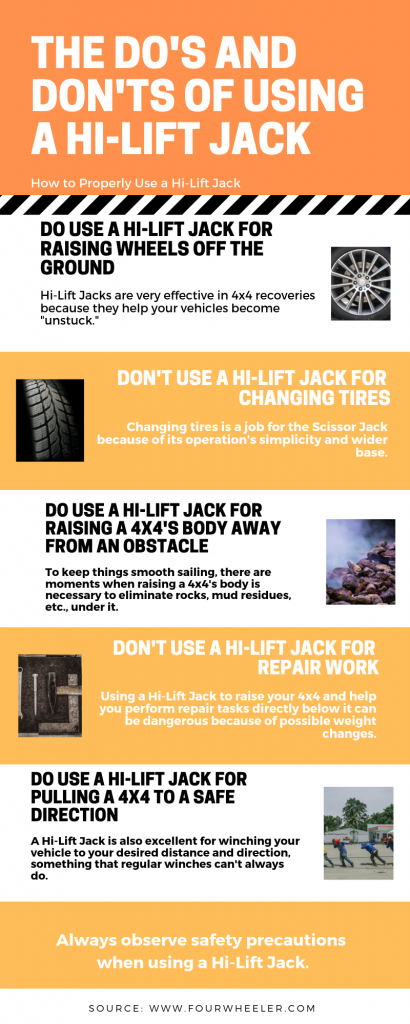
- Can raise vehicles to more than 4′.
- For larger vehicles.
- Not intended for vehicles with low ground clearance.
- Quite heavy to carry.
3. Exhaust Jack
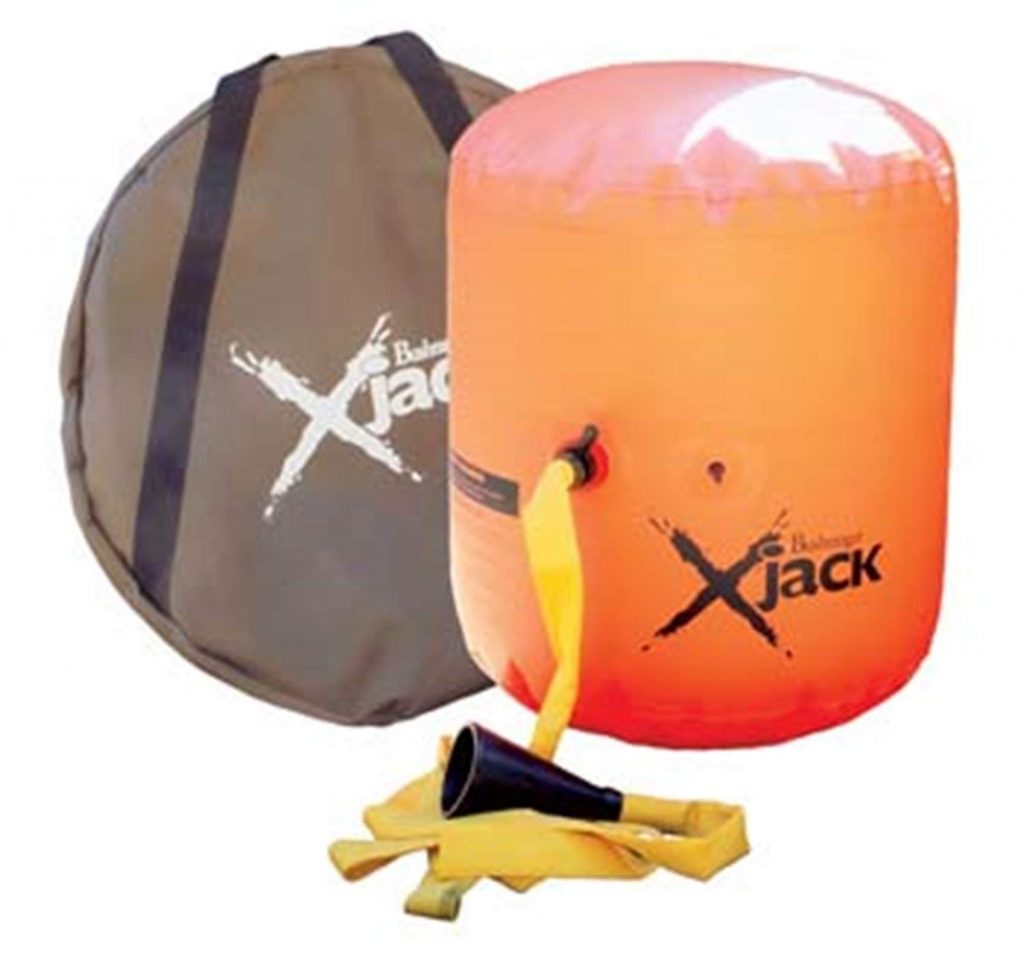
The exhaust jack or simply known as air jack is something with a cone that you attach to either your 4×4’s tail pipe or air compressor, for it to absorb air. This kind of off-road jack is then placed under your vehicle until it eventually expands (like a hot air balloon). And of course, as it expands, your 4×4 is slowly lifted to its optimal level.The biggest advantage of exhaust jacks is that they can be used on soft and uneven ground. Try using your hi-lift in a pile of mud – it doesn’t work well!
- Lifts vehicles in 30 seconds.
- Lifts vehicles automatically.
- Can be damaged by sharp objects.
4. Hydraulic Jack
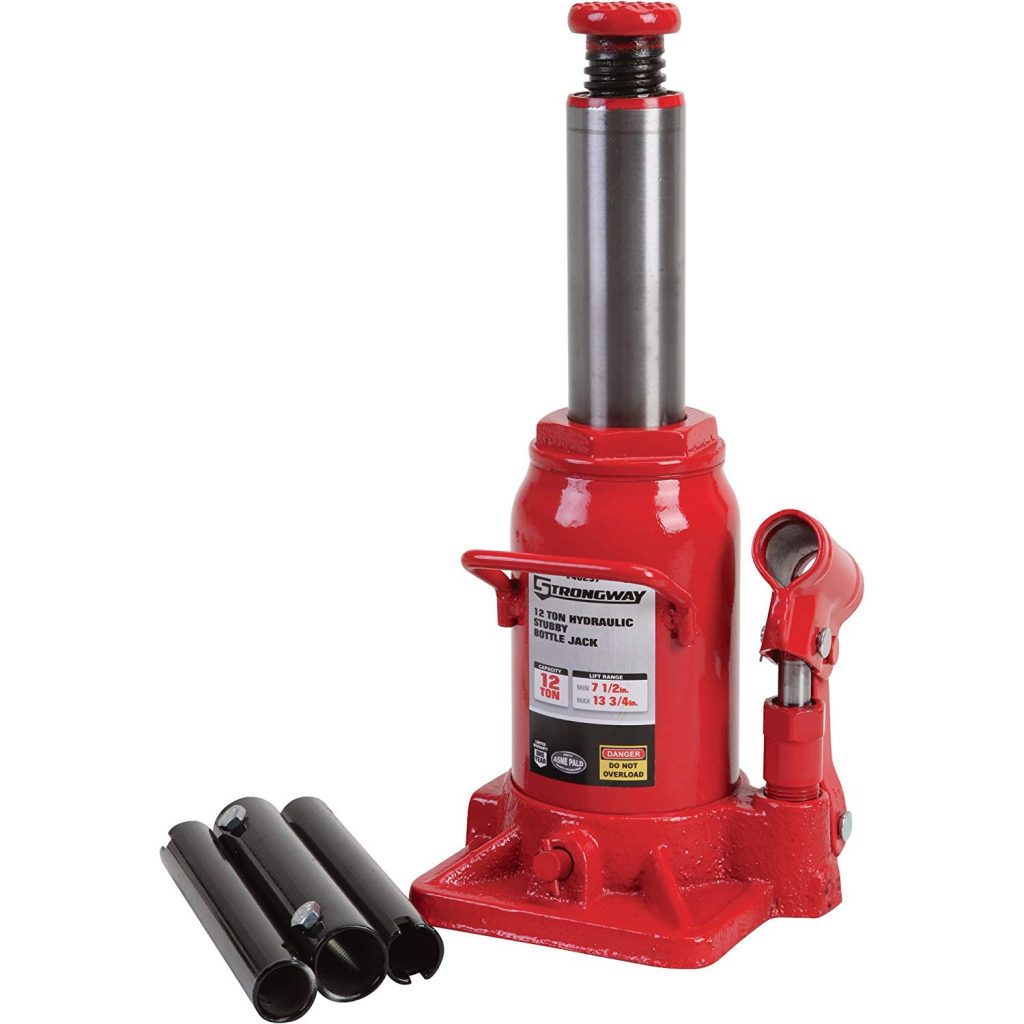
The hydraulic jack (or bottle jack) as the name suggests, runs on a fluid that’s either oil or water. This where bottle jacks get their impressive lifting power!Hydraulic jacks have good lifting power but unfortunately have limited heights with which they can lift a vehicle which unfortunately doesn’t make it ideal for larger off-road vehicles.
- Longer base adds stability.
- Longer handle makes lifting fast.
- Not meant for vehicles with very low ground clearance.
- Lacks wheels for maneuverability.
- Still requires the use of a separate timber block in between itself and a large vehicle, to support vehicle’s body in the lifting process.
5. Floor Jack
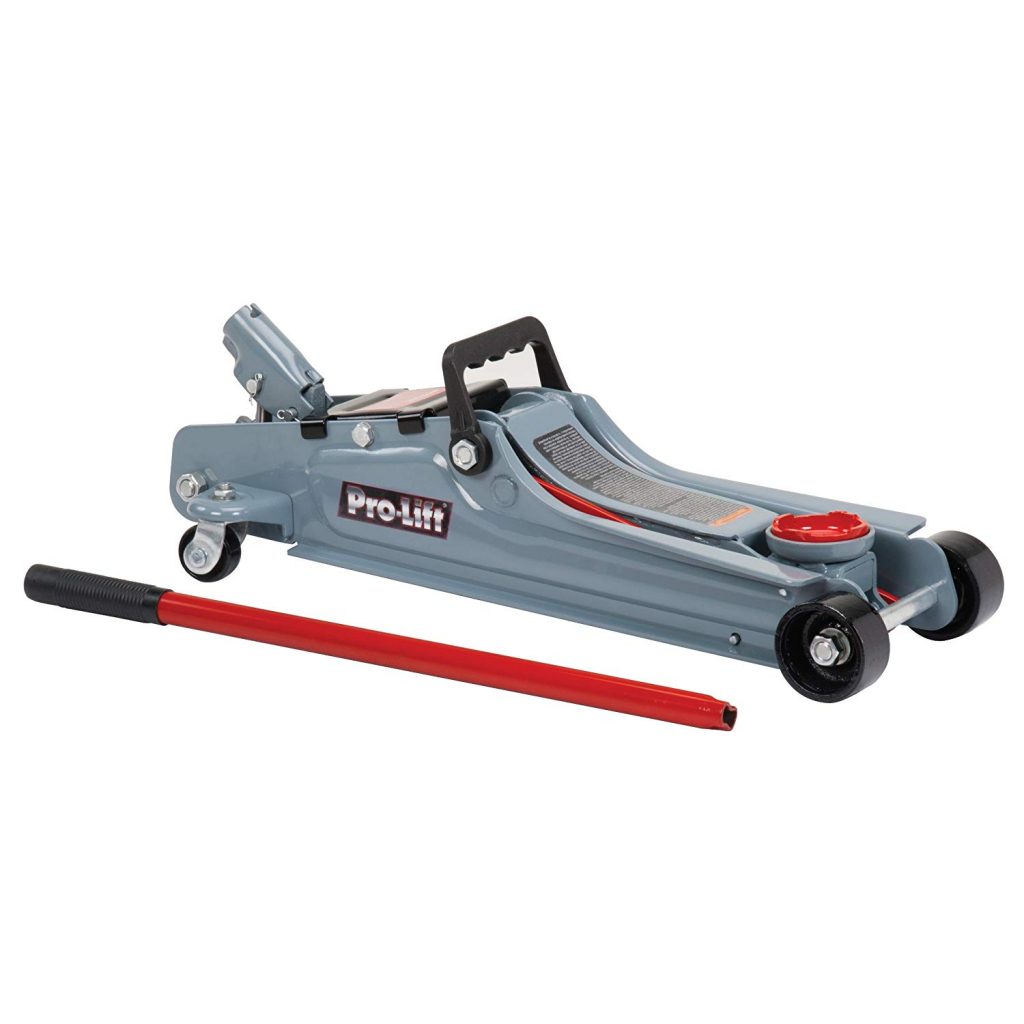
Everyone’s favorite jack!The floor jack is also known as the trolley jack because it resembles a push cart, due to its wheels for easy transportation. The truth is, it’s another kind of hydraulic jack that lifts vehicles to your desired height with the use of either oil or water as well.The floor jack is very similar to a hydraulic jack except with the added convenience of being able to be easily rolled into position. Lifts are also effortless and quick with the extra-long handle which allows a vehicle to be raised within seconds.The major downside with floor jacks is that they’re essentially a garage only jack – you can’t store these suckers in your vehicle for emergency purposes.
- Convenient maneuverability because of the wheels.
- Easily raises vehicles with low ground clearance.
- Very bulky.
Storing the JackNot all off-road jacks are created equal, which means they come in a variety of shapes and sizes. As a result, you’ll probably find some of them difficult to put in a particular area of your 4×4. But to give you an idea, more or less, on how to deal with such, here are some pointers you should bear in mind.
- Traditional vehicle jacks are the easiest to store in your vehicle’s trunk because of their really small package. And because they’re lightweight as well, you won’t have trouble carrying them around. Their only drawback is they’re for general emergency repair or usage, and not 4×4-specific.
- Jack Screws which are also a kind of a traditional vehicle jack, can be kept in your vehicle’s trunk but let you do minor lifting or 4×4 modifications, unlike scissor jacks.
- Even though hi-lift jacks are slightly bigger than scissor jacks, what gives them an advantage over scissor jacks is they can be placed on different portions of your 4×4, based on your preference. If you’re using a jeep, you can put them on the hood. Or if you aren’t comfortable with the idea, you can place them on the front bumper, back bumper, or roof.
- Hi-lift jacks have a tendency to rattle because the base is only held by a cutter pin. So, if you don’t want your hi-lift jacks to be noisy, you can put a Velcro strap around them.
- The most dangerous to store among the common off-road jacks is the purely hydraulic one because oil in it mixed with the heat of the surroundings are lethal ingredients for fire. It can also be corrosive. That’s why, it’s normally left in the garage or workshop.
Conclusion
These are some of the most important points to consider when picking an off-road jack. Take note, choosing an off-road jack isn’t a matter of being ahead of your buddies. In fact, it’ll be the least of your problems, once you find yourself in a tight spot. Learning and understanding how each off-road jack works is a huge key to your survival.
References:
- http://www.thegreenbook.com/the-most-common-types-of-hydraulic-jacks-and-their-functionality.htm
- http://bestfloorjacks.com/different-types-of-jacks/
- https://www.whichcar.com.au/gear/recovery/off-road-jacks-explained
- https://www.roundforge.com/articles/hi-lift-jack-buyers-guide/#Hi-Lift_Lengths_
- https://www.basic-mathematics.com/finding-the-average.html
|
Scissor Jack |
|
Hi-lift Jack |
